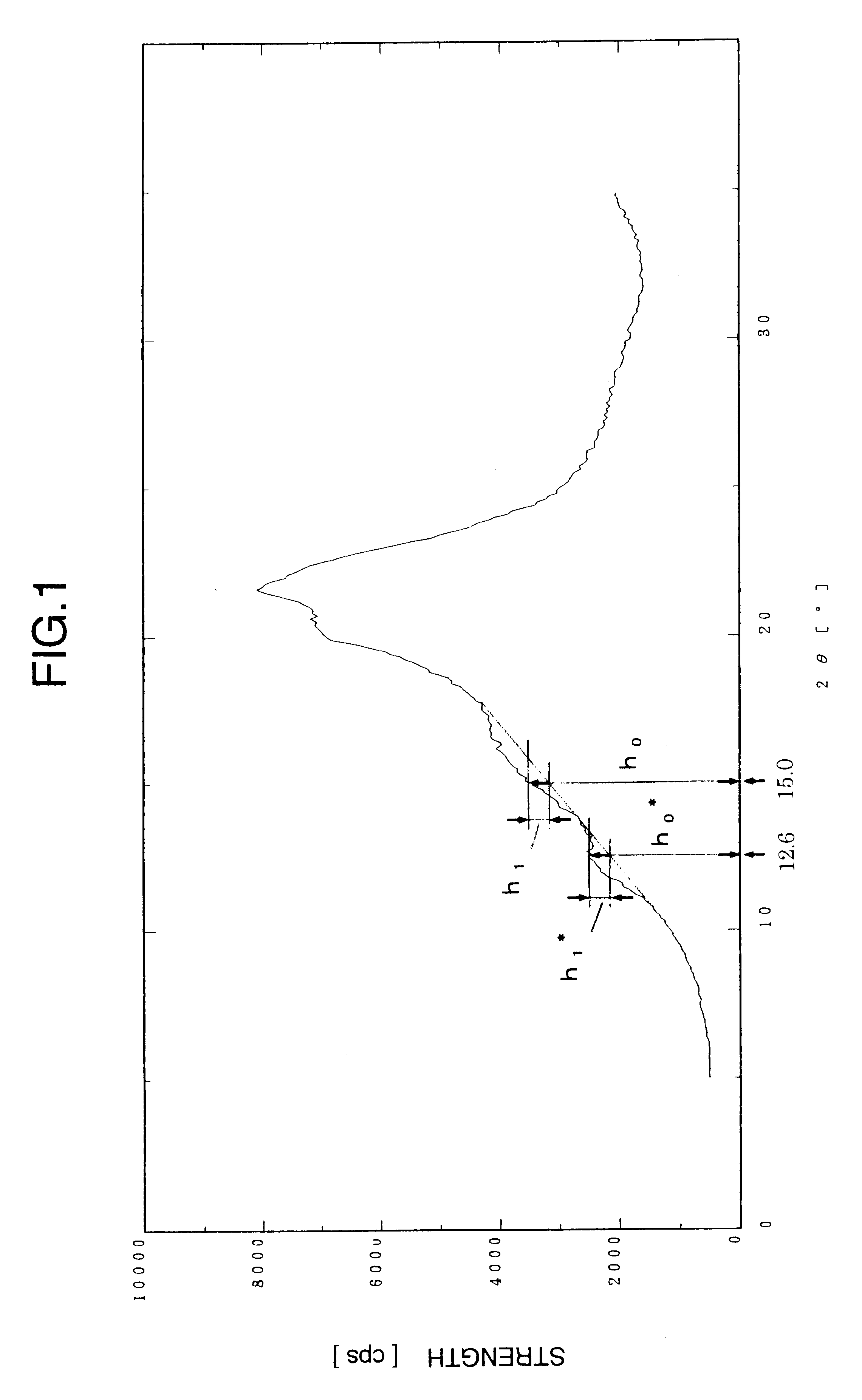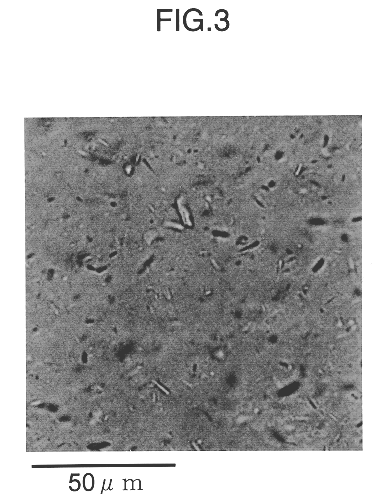Cellulose dispersion
a technology of cellulose and dispersion, applied in the field of cellulose dispersion, can solve the problems of difficult water-soluble cellulose derivatives for water-based paints, low thixotropic properties, and dislike of sticky feel and spinnability characteristics of water-soluble polymers, and achieve the effect of high dispersion stability
- Summary
- Abstract
- Description
- Claims
- Application Information
AI Technical Summary
Benefits of technology
Problems solved by technology
Method used
Image
Examples
example 2
A preparation example of the present invention in which the transmittance is not less than 80% is shown.
The S1 sample obtained in Example 1 was diluted with water to a cellulose concentration of 2% and then subjected to mixing in a blender at a revolution rate of 15,000 rpm for 5 minutes. Subsequently, this S1 sample after the dilution was treated in an ultrahigh pressure homogenizer (Microfluidizer Model M-110EH manufactured by Mizuho Kogyo Kabushiki Kaisha, operation pressure: 1,750 kg / cm.sup.2) to obtain two gel-like samples, which were a sample treated once (1 Pass) and a sample treated 4 times (4 Pass). The sample treated once is referred to hereinafter as the S2A sample and the sample treated 4 times as the S2B sample.
The cellulose of the S2A sample had an average degree of polymerization of 38, such a crystallinity that x.sub.I was 0 and x.sub.II was 0.28 and an average particle diameter of 0.86 .mu.m, and the transmittance of the dispersion was 74%.
The cellulose of the S2B s...
example 3
Two samples were obtained, one of which was prepared by subjecting the S1 sample obtained in Example 1 to five repetitions of mixing, centrifugation and decantation using ethanol, and the other sample was obtained by subjecting the S1 sample to the same procedure as above using acetone. At this time, the cellulose concentration in the ethanol substitution product at this time was 7% and the cellulose concentration of the acetone substitution product was 6%. Further, these samples were diluted with the respective dispersing media so that each of the cellulose concentrations became 3% and then subjected to granulating treatment in a blender at a revolution rate of 15,000 rpm for 10 minute to finally obtain two samples. The ethanol substitution product thus obtained is referred to hereinafter as the S3A sample and the acetone substitution product thus obtained as the S3B sample. In each of the S3A sample and the S3B sample, the cellulose thereof had an average degree of polymerization ...
example 4
The S1 sample obtained in Example 1 was diluted with a water / ethanol mixture so that the cellulose concentration in the dispersion became 1% and the composition of the dispersing medium became 50% by volume of water and 50% by volume of ethanol, and thereafter, subjected to mixing treatment in a blender at a revolution rate of 15,000 rpm for 5 minutes. Further, this mixture was subjected 4 times to ultrahigh pressure homogenizer treatment in the same manner as in Example 2 to obtain a viscous dispersion. This dispersion is referred to hereinafter as the S4A sample. Subsequently, ethanol and water were added to the water dispersion S2B high in transparency obtained in Example 2 which had been subjected to ultrahigh pressure homogenizer treatment so that the cellulose concentration in the dispersion became 1% and the composition of the dispersion medium became 50% by volume of water and 50% by volume of ethanol, and thereafter, they were subjected to mixing treatment in a blender at a...
PUM
| Property | Measurement | Unit |
|---|---|---|
| Fraction | aaaaa | aaaaa |
| Fraction | aaaaa | aaaaa |
| Percent by mass | aaaaa | aaaaa |
Abstract
Description
Claims
Application Information
 Login to View More
Login to View More - R&D
- Intellectual Property
- Life Sciences
- Materials
- Tech Scout
- Unparalleled Data Quality
- Higher Quality Content
- 60% Fewer Hallucinations
Browse by: Latest US Patents, China's latest patents, Technical Efficacy Thesaurus, Application Domain, Technology Topic, Popular Technical Reports.
© 2025 PatSnap. All rights reserved.Legal|Privacy policy|Modern Slavery Act Transparency Statement|Sitemap|About US| Contact US: help@patsnap.com



